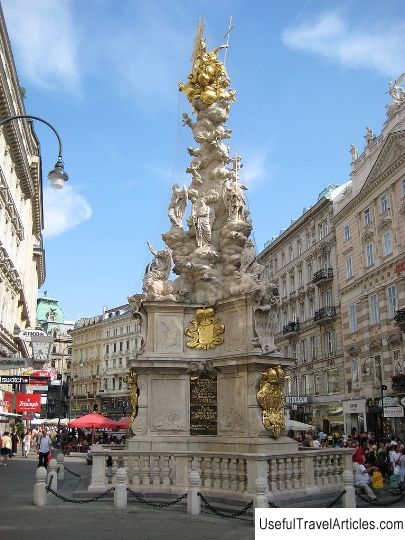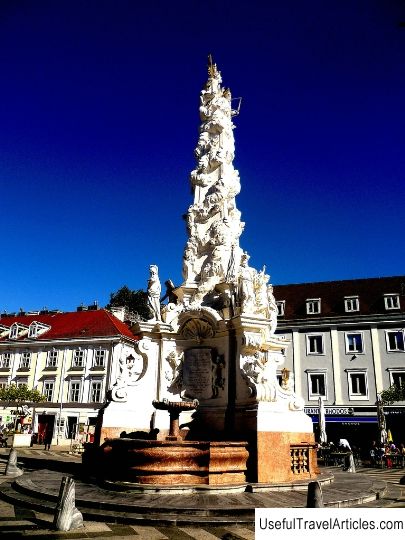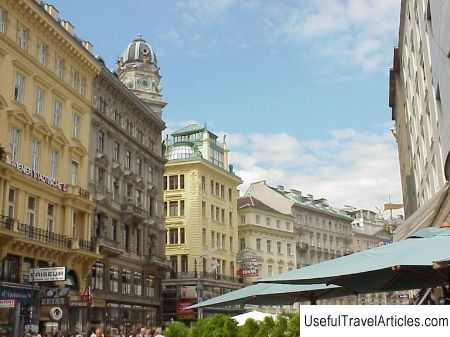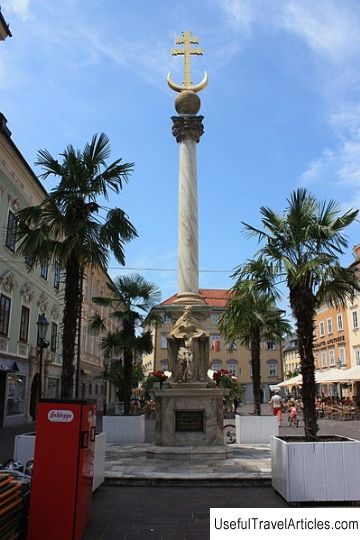Plague Column (Pestsaeule) description and photos - Austria: Vienna
Rating: 8,2/10 (2049 votes) 
Plague Column (Pestsaeule) description and photo - Austria: Vienna. Detailed information about the attraction. Description, photographs and a map showing the nearest significant objects. The name in English is Pestsaeule. Photo and descriptionThe Vienna Plague Column, also called the Holy Trinity Column, is located on Graben Street in the center of Vienna. It is one of the most famous and outstanding sculptures in the city. The plague was perhaps the worst epidemic in medieval Europe. It is known that the epidemic of 1348-1352 claimed the lives of a third of the population of Europe. In 1679, the plague came to Vienna. This was one of the largest epidemics. The population of Vienna, which at that time was about 100 thousand people, decreased by a third. It all started a year earlier, in 1678 in Leopoldstadt. A wooden column was then installed in Vienna (architect Johann Fruvert). By the middle of summer, the plague reached Vienna, Emperor Leopold and his family left the city, promising to erect a column of the Holy Trinity in honor of the deliverance of Vienna from the plague. In 1683, construction began on a new plague column, the one that has survived to this day. The work was supervised by Fischer von Erlach. In addition to him, Rauchmiller and Strudel took part in the creation of the column, who created a statue of the kneeling emperor. The column was opened in 1693. Despite the long construction period, frequent changes in design, as well as a large number of sculptors working on the project, the monument looks quite harmonious. It should be noted that the emergence of a cheerful song "Dear Augustine" is associated with the plague epidemic in 1679 ... In the midst of the plague, when the city plunged into fear, horror and death, a certain Augustine whiled away the evenings in a small tavern in the Meat Market. The young man was a singer and musician, and also a great drinker. Being very drunk, one evening he walked down the street and fell into a pit where the corpses of the townspeople who had died from the plague lay. Having slept in the pit until morning, with the first rays of the sun, Augustine began to sing his song "Oh, my dear Augustine, everything is lost!", Thereby attracting attention to himself. After sleeping all night, Augustine did not catch the plague. Cheerful townspeople immediately picked up a funny song, which became very popular. Augustine himself died in 1685 from alcohol poisoning. Cheerful townspeople immediately picked up a funny song, which became very popular. Augustine himself died in 1685 from alcohol poisoning.       We also recommend reading Royal Palace (Palacio Real) description and photos - Spain: Madrid Topic: Plague Column (Pestsaeule) description and photos - Austria: Vienna. |




